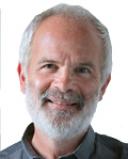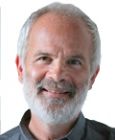Education
Chasing Down Those 65%
What is the percentage of bilinguals in the world today?
Posted November 30, 2014
Post written by François Grosjean.
When asked how many bilinguals there are in the world, I usually state that there are no precise figures but that probably half or slightly more than half of the world's population is bilingual, that is uses two or more languages (or dialects) in everyday life. When asked to be more precise, I usually stay around the fifty percent mark.
I immediately add that we are still a long way away from knowing exactly how many people are bilingual. Rare are the national censuses that have a question pertaining to bi- or multilingualism, and when they do, the meaning they give to this notion can be very restrictive (see here). In addition, those countries that only ask about languages, not bilingualism, can reflect a certain partiality concerning what it means to know a language, and then there are those countries that do not even ask language questions in their censuses such as France and Belgium.
One day last year, as I was watching Dr. Kim Potowski, Associate Professor of Hispanic linguistics at the University of Illinois at Chicago, give her very stimulating TEDx talk, "No child left monolingual" (see here), I heard her say, "Now the fact is that 65% of the world today is bilingual or multilingual...". I was intrigued by this sudden jump in numbers and so I wrote to Kim Potowski to ask her what the source was for her figure. She kindly replied that she had found it in a book published in 2002 which I immediately consulted, but I had no success finding the figure. I left it at that although her number seemed really high to me.
More than a year later, it was a pleasant surprise to hear from Kim Potowski again who told me that she had finally found the source. The figure had been given by Professor Colin Baker and his colleague, Dr. Sylvia Prys Jones, both of Bangor University in Wales, in the Preface to their monumental The Encyclopedia of Bilingualism and Bilingual Education published in 1998. In it, they state, "... around two-thirds of the world's population are bilingual".
So the next stage in my quest was to write to Colin Baker to ask him where they had obtained that figure, or how they had worked it out. Over several exchanges of emails, he explained to me how they had guesstimated the figure. They put together a rough spreadsheet with estimates of each country's bilingual population. They used Ethnologue, THE source about languages in the world today (see here), to which they added several other sources. At the time, the language sources were incomplete (e.g. on the bilingual language minorities in China and in other large countries) or quite simply the data was inaccurate.
Colin Baker continued, "My memory is that we estimated that the 'true' value was probably between 50% and 70% if we were rather generous in our definition of a 'bilingual'. Under 50% seemed too small and above 70% rather unlikely. While 60% would have been a midpoint, it would have been spurious and dishonest to suggest we could be that accurate. Hence 'two thirds' became a less spurious way of giving our generous guess."
I asked Colin Baker if they had taken the mean of percentages worked out for each country, in essence giving each country the same weight even if the populations are of different sizes, or if they had taken the total estimated number of bilinguals, across all countries, divided by the world's population at the time. He replied that they had used the latter approach but that they had to exclude some countries from the total for sheer lack of data.
Colin Baker added an important remark to this. They had included those learning a second language, particularly English, which adds literally millions of people to the numerator. Based on this, and on the fact that at the time the numerical bilingual data was so poor, he now thinks that it would have been wiser to give upper and lower boundaries for the guesstimate, that is between 50% and 70%, ".... as this would have better expressed what is not definable, measurable or likely to be agreed upon".
So where do we stand on this question today? Colin Baker summarized his answers to my emails with, "I suppose the real answer is: we do not know ....". In addition, his figure includes language learners which may be problematic as many of them, unless they are new immigrants, are not active bilinguals but only bilingual potentially (recall the definition I have been using in this blog which is that bilinguals are those who USE two or more languages, or dialects, in everyday life). Given all of this, I think that I will continue to state that probably more than half of the world's population is bilingual, and hope that one day we will be able to have a more precise figure.
But will that hope ever materialize? Let's give Colin Baker the last word and imagine a British gleam in his eyes as he says it: "And to add to the fun - perhaps the question about the percentage of the world's population who are more than bilingual (multilingual) could be posed. I'd not even offer a guess on that one!"
Reference
Colin Baker & Sylvia Prys Jones. (1998). Encyclopedia of Bilingualism and Bilingual Education. Clevedon, UK: Multilingual Matters.
"Life as a bilingual" posts by content area.
François Grosjean's website.




